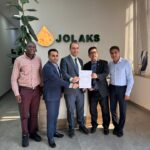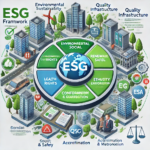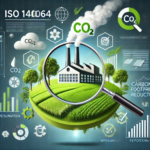Understanding ISO 14065 and ISO 17029: Ensuring Competence and Integrity in Greenhouse Gas Validation and Verification
In today’s evolving regulatory landscape, organizations are under increasing pressure to demonstrate transparency and credibility in their sustainability and environmental reporting. Climate change policies, carbon markets, and sustainability commitments demand robust validation and verification mechanisms to ensure trust in environmental claims. This is where ISO 14065 and ISO 17029 play a crucial role.
What is ISO 14065?
ISO 14065:2020, “General principles and requirements for bodies validating and verifying environmental information,” provides the framework for organizations engaged in validating and verifying environmental claims, particularly concerning greenhouse gas (GHG) emissions, carbon footprints, and sustainability disclosures. The standard ensures that these verification bodies operate with impartiality, competence, and consistency.
ISO 14065 is essential for:
- Organizations seeking credibility in their GHG and environmental claims.
- Regulatory bodies enforcing climate-related compliance.
- Carbon credit and emissions trading platforms that require verified data.
- Stakeholders, including investors and consumers, who rely on accurate sustainability reporting.
The standard integrates with other ISO environmental management standards, such as ISO 14064 (GHG quantification and reporting), to provide a comprehensive framework for climate-related data verification.
What is ISO 17029?
ISO/IEC 17029:2019, “Conformity assessment – General principles and requirements for validation and verification bodies,” is an overarching standard that defines the competence, consistency, and impartiality requirements for bodies performing validation and verification activities. Unlike ISO 14065, which is specific to environmental claims, ISO 17029 applies broadly to any type of validation and verification activities, including environmental, financial, and industrial sectors.
This standard ensures that:
- Verification and validation bodies meet internationally recognized competence standards.
- Processes for assessing environmental claims follow a structured, transparent approach.
- The credibility of sustainability reports and carbon neutrality declarations is reinforced.
ISO 17029 complements ISO 14065 by establishing foundational principles applicable to all validation and verification bodies, making it a key component in the accreditation of environmental verification organizations.
The Relationship Between ISO 14065 and ISO 17029
ISO 14065 and ISO 17029 are closely linked, with ISO 14065 building upon the general principles of ISO 17029. The two standards work together as follows:
- ISO 17029 provides the general requirements for validation and verification bodies across all sectors, ensuring consistency in conformity assessment.
- ISO 14065 tailors these requirements to the environmental domain, focusing specifically on GHG and other environmental validation and verification processes.
- Accreditation bodies use both standards to assess and certify the competence of organizations offering environmental verification services.
In practice, an organization seeking accreditation for environmental verification services will need to comply with both standards, demonstrating technical expertise (ISO 14065) and adherence to broader validation and verification principles (ISO 17029).
Why These Standards Matter for Organizations and Regulators
The importance of ISO 14065 and ISO 17029 cannot be overstated, particularly as climate action initiatives gain momentum. Some of the key benefits include:
- Enhanced Credibility: Organizations that comply with these standards can provide stakeholders with verified environmental data, reinforcing trust and transparency.
- Regulatory Compliance: Many governments and regulatory bodies mandate third-party verification of sustainability reports and GHG inventories.
- Market Access: Verified claims improve eligibility for participation in carbon markets, emissions trading schemes, and green finance initiatives.
- Risk Mitigation: Standardized verification reduces the risk of greenwashing and legal repercussions associated with false sustainability claims.
- Competitive Advantage: Companies adhering to internationally recognized standards can distinguish themselves in the growing sustainability-driven economy.
Implementation Challenges and Considerations
While these standards provide a strong framework, organizations may face challenges in implementation, including:
- Cost of Compliance: Establishing verification processes and obtaining accreditation can be resource-intensive.
- Technical Expertise: Organizations need skilled personnel or third-party expertise to meet the standards’ requirements.
- Evolving Regulatory Environment: As sustainability regulations change, continuous adaptation to new verification requirements is necessary.
Conclusion
ISO 14065 and ISO 17029 are fundamental in ensuring credibility and trust in environmental verification and validation. As organizations strive for sustainability and regulatory compliance, adherence to these standards will be key in achieving transparency, reducing environmental impact, and building stakeholder confidence. By integrating these frameworks into their environmental assessment processes, businesses can not only meet compliance obligations but also gain a strategic advantage in the evolving sustainability landscape.






